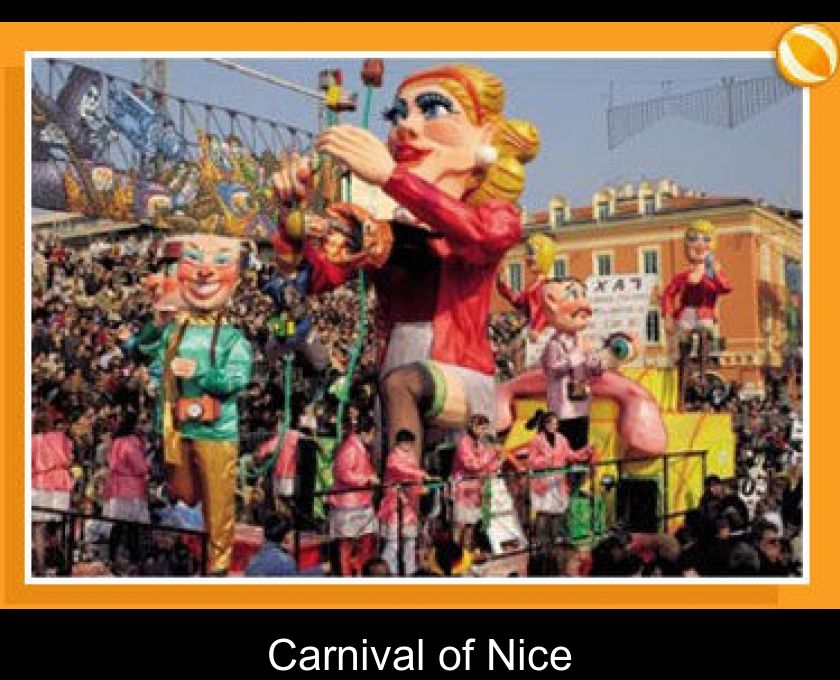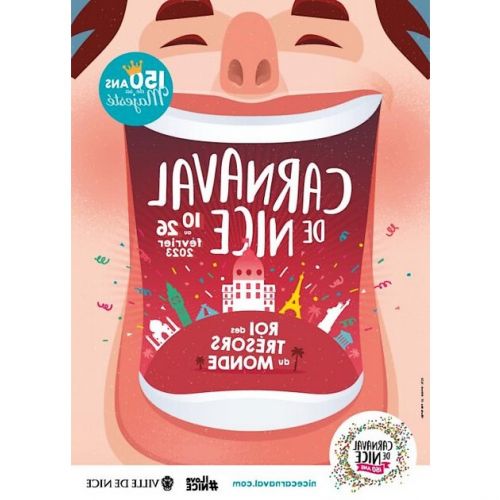Carnival Of Nice
A popular festival throughout France, the Nice Carnival has gained international status thanks to its origins in the Middle Ages. It's fun from mid-February to early March with flower corsos, flower battles and superb fireworks.
Origins and traditions
The etymology of the word Carnival is 'carne levare ', which literally means 'to remove the flesh'.
Since the Middle Ages, the people of Nice, before fasting for 40 days and to better celebrate this cheerful period, enjoyed a fat, rich and copious cuisine and let themselves go to all excesses. To perfect this festival and benefit from a certain immunity they hid behind masks, protected by disguises, and this until Mardi Gras.
The First mention of the Carnival of nice dates back to 1294, when Charles of Anjou, Count of Provence, reports that he spent in Nice 'the joyous days of Carnival'.
Until the 18th century, the festivities were punctuated by masked balls and frenzied farandoles in the present Old Town. The excesses were quickly controlled by the 'Abbés des Fous', charged by the clergy to channel the popular jubilation
The beginnings of the Carnival
Until 1872, the festival was in full swing in the streets of Nice, according to the inspiration of each person. At that time, the disguised crowd was bombarded with confetti, flour and eggs.
In 1873, Andriot SAËTONE from Nice took the initiative to found a 'Festival Committee' which, under the patronage of the municipality, was in charge of organizing and expanding the Carnival of Nice.
On February 23, 1873, the first Carnival of Nice in its modern form entered the city. Alexis MOSSA and then his son Gustav-Adolf brought, until 1971, an astonishing particularism, grotesque and fabulous, by making models of the most spectacular floats that have paraded in Nice.
On February 14, 1882, His Majesty 'Triboulet' made a triumphant entry into the city: the modest straw and rag puppet, until then an immobile spectator on the Place de la Préfecture, took part for the first time in the procession, sitting on the 'royal chariot' identical to those of today.
Flower Battles
It was in 1876, on the famous Promenade des Anglais, that the Premiere Battle of Flowers of the Nice carnival was born. It was born simply from the timid exchange of bouquets between crews.
Over the years and at the request of the spectators these exchanges have turned into a real prestigious show and have become part of the Carnival.
Today, the Battle of the Flowers is a real corso composed of about twenty floats all dressed with fresh flowers. Four to five thousand stems are needed to cover these floats of 7 meters long, 2 wide and 6 high. Their design and elaboration represent meticulous work, each flower being stitched to compose a Mosaic most delightful scented.
For the needs of the Nice carnival the flowers come from the artisans-artists who provide about 90% of the flowers used, from local growers. The main plants are gerberas, daisies, irises, roses, carnations, gladioli. The mimosa, symbol of Nice, obviously occupies a privileged place in the heart of these battles.
The splendor of such a corso, of typically Nice inspiration, has seduced the United States, Quebec, England, Tahiti and our Neighbors Italy. Nice exports all over the world this know-how of elegance, beauty and charm that are the Battles of Flowers.
The Corso
At the opening of the Carnival of Nice, His Majesty the King arrives in great pomp in a deafening din. His ephemeral reign is thus announced. During the carnival, all the madness will be allowed, the originality and the exuberance will be of rigor.
The Corso Carnavalesque consists of about twenty floats and about 300 'big heads'. On the last evening, according to tradition, His Majesty Carnival marches alone, escorted by his executioners, before being burned on a pyre set up at sea or on the shore.
Confetti
From 1830, the ' Coriandoli ', seeds coated with sugar, are used as projectiles during the festivities. The sweets were soon replaced by eggs filled with soot or flour, beans or chickpeas, until the appearance of the plaster confetti battles.
In 1955, paper replaced plaster, which had become dangerous. These small light and multicolored rounds -15 tons each year- have become over time the inevitable actors of a successful Carnival of Nice.
For some time, they have been accompanied by 'spaghetti bombs', 50,000 per edition, real multicolored spider webs woven on each parade.











